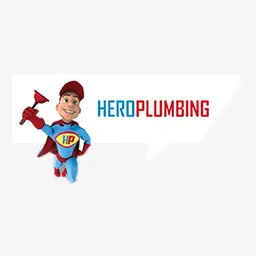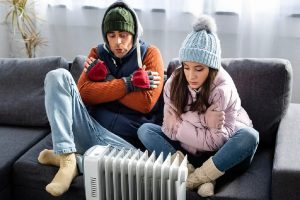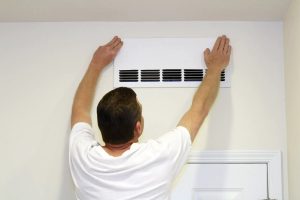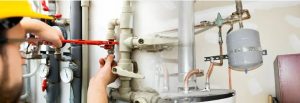Table Of Contents
- Ventless Gas Heater Safety
- How Do Ventless Gas Heaters Work?
- What Types Of Ventless Gas Heaters Are There?
- How Effective Are Ventless Gas Heaters?
- Potential Toxic By-Products Of Ventless Gas Heaters
- Mitigating The Health Risks Of Ventless Gas Heaters
- Will A Ventless Gas Heater Heat Your Space?
- Advantages Of Ventless Gas Heaters
- You Might Need To Contact A Professional
Ventless Gas Heater Safety
A ventless gas heating device, also known as an unflued gas heater, does not have a chimney vent and therefore is installed in the room to be heated. Instead of being expelled to the outside through a flue, burning products are released into the heated room. Natural gas, and LPG (propane), are commonly used fuels.
While the significant benefit of vent-free gas heating equipment is efficiency, the worsening of indoor air pollution is a problem. Local and state rules regulate unvented heaters in some regions. At first glance, ventless gas heaters appear to be of fantastic value. They are cheap, can be placed practically anywhere in the home, do not need a costly vent tube or much else in the way of setup, and are efficient.
They are also believed to be safe. Since around 1980, all ventless warmers have been required to include an “oxygen depletion sensor” (ODS). The sensor enables the detection of oxygen levels inside the room. If the oxygen concentration falls below a certain threshold, the ODS closes down the gas heater.
This article seeks to look into ventless gas heaters and how safe they are. Read on to find out.
How Do Ventless Gas Heaters Work?
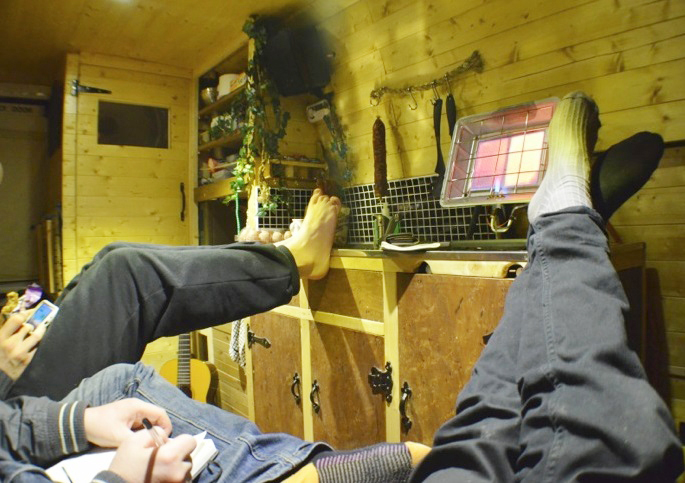
Since all flame heaters need oxygen for their combustion process, conventional heaters rely on an available supply of outside oxygen to continue combustion. However, numerous types of flame heaters do not burn the fuel supply, including pellet stoves as well as wood-burning stoves.
Consequently, smoke is emitted into the room as the combustion process occurs; this should be vented back into the outdoor air where it would disperse, but the disadvantage is that most of the heat is also vented. In addition, combustion almost always leads to the production of carbon monoxide. This gas is harmful to people and pets and can be fatal if discharged into an unventilated environment.
Though gas appliances burn far more effectively than firewood or pellet-burning devices, the ensuing carbon monoxide has traditionally necessitated the installation of an exterior air vent to run the unit properly. Unflued gas heaters, on the other hand, do not need such a vent; instead, they merely vent the hot combustion exhaust straight into the rooms in which they have been installed, resulting in a far more potent heat source.
Ventless heaters are highly efficient. They can quickly heat a space, but they are not intended for long-term heating or heating more than a single room. They were designed only to be used when essential and under strict parental guidance. Furthermore, because these heaters do not circulate fresh air from outside during heating, it is critical to open a window when using them.
The heater absorbs oxygen and emits carbon dioxide throughout the burning process with ventless gas heaters. This would take some time, but the heater might eventually suck up all of the air in the space, making breathing more difficult. Another dangerous by-product of these heaters is water vapour.
This is not dangerous to you, but it may be bad for your house. The water vapour might cause mould or mildew to grow on surfaces in that room over time. To prevent these problems, open the window to allow fresh air to circulate when using your ventless gas heater. If you have any queries regarding whether or not your ventless heater is safe to use, please contact a plumbing service right away!
What Types Of Ventless Gas Heaters Are There?
For urgent heating, small and portable devices for use in a bedroom have been developed; others are designed to function as a permanent heat source. They can heat around two or more spaces with additional blower kits and ducting. There are cabinet mounted units, wall-mounted units, and fireplace inserts offered in a range of flame patterns such as blue flame, infrared, or yellow flame. Sizes range from less than 5,000 Btu/hour to more than 38,000 Btu/hour.
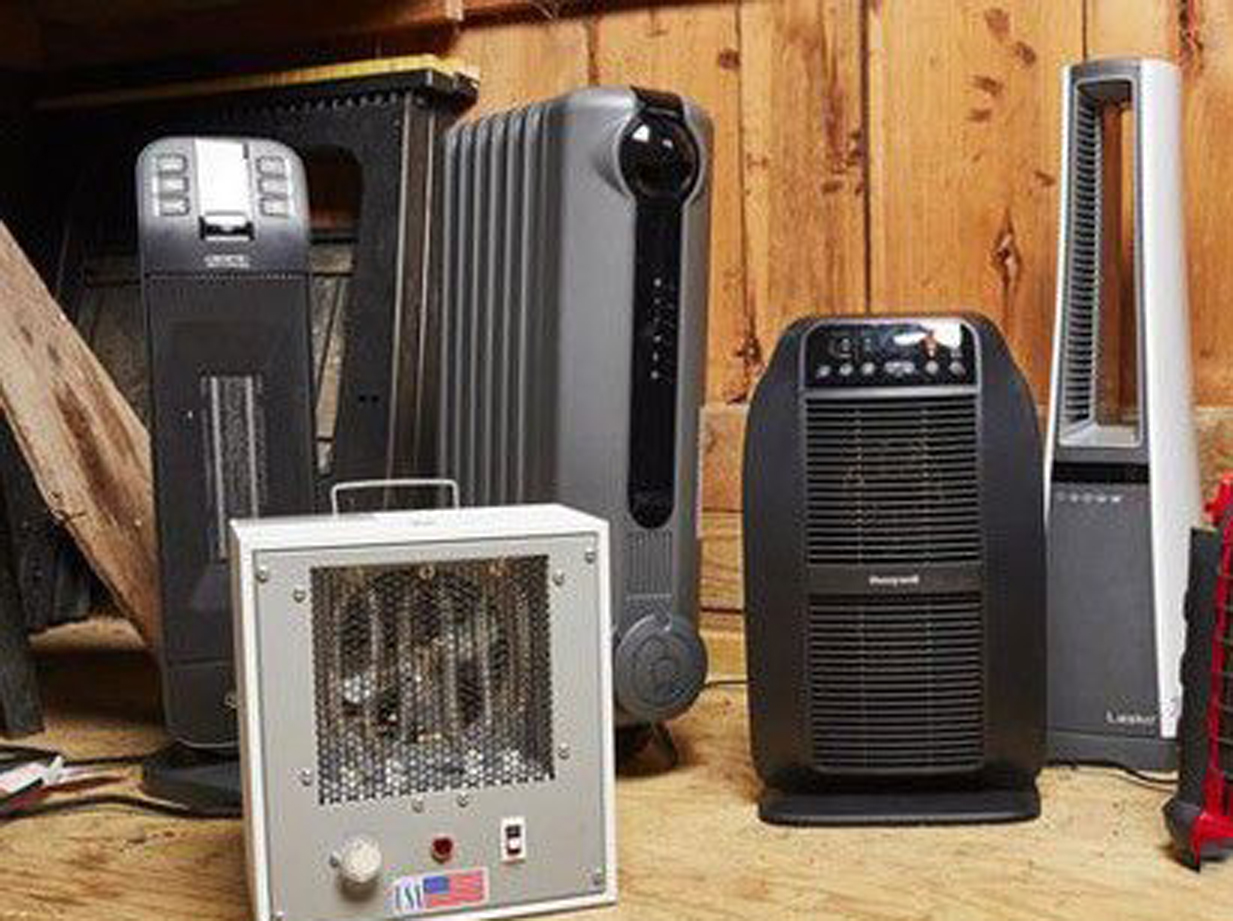
A vented gas heater, direct-vent wood heater, or electric heating system will all deliver enough heat to heat a room for extended time intervals comfortably. Carbon Monoxide (CO), Carbon Dioxide (CO2), Nitrogen Dioxide (NO2), and water vapour are also included in the by-products from ventless gas heaters or wood stove fireplaces.
A preliminary design, as well as installation, may enable hydrocarbons to enter your home. Nevertheless, if the vent system is functioning correctly, all pollutants will escape to the outside via the vent pipe. Therefore, pollution levels will not rise. Pollutants are released into the home by ventless heaters.
Once burning contaminants have been introduced into your home, outdoor air must be supplied to diffuse and eliminate the toxins. The extra ventilation required to decrease pollutants to bearable quantities is determined by the building’s tightness as well as the health of the inhabitants. Heating chilly outdoor air diminishes the heater’s thermal performance.
How Effective Are Ventless Gas Heaters?
Even if the flame burns with greater than 99 per cent effectiveness, not all of the heat is distributed. The combustion of hydrogen, which creates water vapour, accounts for about 9.6 per cent of the heat energy present in the gas. The heat must be recovered by condensing the water vapour.
Water vapour condenses on interior surfaces when using an unvented heater, increasing the risk of wood rot, flaking paint, plaster failure, or even mould growth. To avoid wet windows or walls, the vapour should be kept from condensing, lowering the heater’s highest efficiency to around 90.4 per cent.
Potential Toxic By-Products Of Ventless Gas Heaters

Whenever you combust a hydrocarbon fuel like natural gas or propane, the fuel combines with oxygen to produce heat plus two principal combustion substances: vapour and carbon dioxide. If you allow those by-products of combustion to be expelled into your living area, you create two difficulties.
Carbon dioxide, a non-toxic gas created after full combustion of carbon-based energy, is the primary burning compound generated when gas burns. In addition to it, several other combustion by-products are harmful to your health, including:
- Carbon monoxide is a hazardous gas manufactured when combustion is partial.
- Nitrogen dioxide, which is also a poisonous gas.
- Water vapour which encourages mould and mildew growth.
The burning process in a ventless gas heater is highly complete— around 99.9 per cent efficacy or better, as per manufacturers. However, even one-tenth or one-hundredth of a percentage can be pretty unpleasant, comprising carbon monoxide, nitrogen dioxide, fumes, or unburned hydrocarbons.
Carbon monoxide is hazardous (even lethal) at high concentrations and causes health issues at low concentrations. Even at low levels, nitrogen dioxide can affect your immunity and make you more susceptible to respiratory diseases. For ventless gas heaters, the oxygen depletion sensor (ODS) cuts off the gas supply if the oxygen concentration falls below around 18 per cent (an indication that not enough sufficient fresh air is coming into the home).
However, the ODS does not really sense carbon monoxide or other harmful pollutants. The other issue with venting combustion by-products indoors is that “clean” burning products are not safe to use in significant quantities in your home. High carbon dioxide levels can make you tired and may cause eye discomfort.
Large amounts of water vapour discharged into your home elevate humidity levels, which can lead to condensation on window panes, concrete slabs, or parts of the wall having “thermal bridges” across them. This dampness can promote mould development, trigger allergies and asthma attacks in homeowners, and cause deterioration. A 30,000 Btu/hour ventless gas heater will create roughly around 1.3 litres of water every hour, or around 26.5 litres a day if run continuously.
Checking the safety warnings that accompany ventless gas heaters may give you a hint that they really are not so good. This suggests that a window remains open throughout operating, that they should not be used for more than around four hours at a period, and also that they not be utilised as the primary heating source.
What Are the Dangers of Carbon Monoxide (CO)?
CO is a very poisonous, colourless, odourless, tasteless, non-irritating toxin that can cause death or lasting brain and organ damage. CO poisons more individuals than all other toxins combined. Gas heaters emit very little carbon monoxide when appropriately maintained and regulated.
The introduction of Oxygen Depletion Sensors has almost reduced one source of carbon monoxide fatalities from unvented heaters: partial combustion induced by a lack of air (ODS). Regrettably, the ODS does not react to partial combustion induced by incorrect gas pressure, dust, filth, or corrosion on the heater or interruption of the heater by airflow. As a result, ventless heaters continue to be a source of worry for CO poisoning.
What Are the Dangers of Carbon Dioxide (CO2)?
Although CO2 is not toxic, in high quantities, it can result in fatigue, headaches and contribute to the “stuffy” feeling of closed buildings. Even when correctly operated, most unvented gas heaters emit high quantities of carbon dioxide, boosting the levels in your home.
What Are the Dangers of Nitrogen Dioxide (NO2)?
NO2 is a hazardous gas that, at low concentrations, causes upper respiratory irritation such as coughing, sore throat, headache, vertigo, as well as nausea. A burning flame always produces some NO2, the quantity varying based on the scale and design of the heater. NO2 has been related to asthma attacks throughout the winter.
What Are the Dangers of Water Vapour?
If a residence is excessively dry, water vapour is not a concern, and fair use of an unvented heater will result in the right amount of moisture. However, if your house is already excessively damp, using an unvented heater will exacerbate the moisture problem. Water is created in significant quantities when a fuel is burned, with over 4.8 gallons generated in around 24 operating hours of a 28,000 Btu/hour natural gas heater.
Mitigating The Health Risks Of Ventless Gas Heaters
The most effective way to lessen the risks to your health is to replace your ventless gas heater with a vented gas or electric heater. However, in the event you still want to keep your ventless gas heater, the following recommendations are suggested:
- Only use gas heaters with ODS pilots that have been certified.
- Consider following all operating and maintenance directions.
- Clean the heater once a year or more frequently if specified in the owner’s handbook.
- Use a small heater instead of a large one. Gas equipment manufacturers recommend that heaters be appropriately sized to reduce the number of emissions.
- Do not run your heater for more than around 4 hours at a time. Unvented gas heaters are solely intended for auxiliary usage.
- Unvented heaters should not be used in bedrooms, restrooms, or other tight rooms.
- As specified in the owner’s handbook, provide appropriate ventilation. If the windows and doors are weather-stripped, some outside air supply will most certainly be necessary.
- If somehow the pollutants are causing health concerns, increase ventilation or stop using unvented heaters.
- Add a carbon monoxide sensor that is U-L or IAS listed. Since low levels of carbon monoxide could be harmful to your health, look for a detector that is labelled as “sensitive” or has a display.
Will A Ventless Gas Heater Heat Your Space?
Unvented heaters are typically intended as auxiliary heat sources. According to some research performed for the Gas Appliance Manufacturers Association of Australia (GAMAA), “creating a pleasant temperature” with an appropriately sized heater “may not even be attainable.” A bigger heater will contaminate the air beyond the allowed standards in cold temperatures.
Advantages Of Ventless Gas Heaters
- Since ventless gas heaters are not linked to outside air, they are among the most effective equipment for heating rooms in a home; on average, ventless heaters run at approximately around 99.9% efficiency.
- Most ventless gas heaters do not need electricity, making them suitable for emergency usage.
- Most are silent, simple to use, and effective.
- They use gas, which is a very affordable source of energy in most parts of the country.
- Most ventless heaters are designed to create a comfort zone within a single room, thereby lowering heating costs.
- Compared to vented gas heaters, they are cheaper to install.
You Might Need To Contact A Professional
Ventless gas heaters are intended to perform cleanly; however, there is no such thing as a pollution-free flame. In addition, age, dust, and misalignment of the air intake shutters of a heater can cause the flame to combust dirtier with time. Dirty flames emit more combustion by-products, which might be harmful to you and your family’s health.
Are you ready to inhale the burning products from a ventless heater, even though the quantities are small? Well, it might be the only option you have due to several reasons known to you. However, you should contact a professional to provide you with more suitable guidance on the matter.




